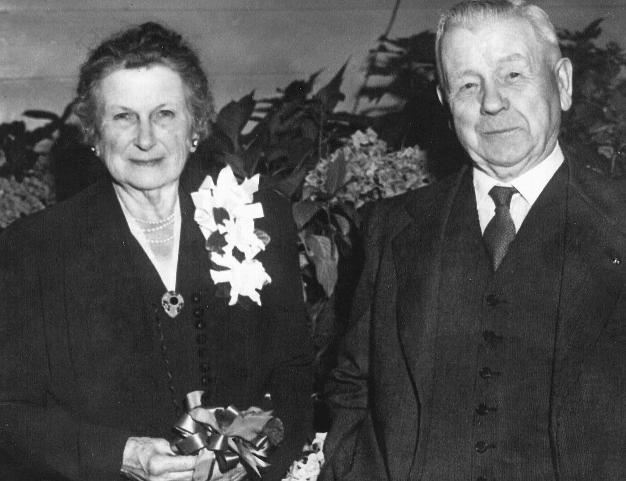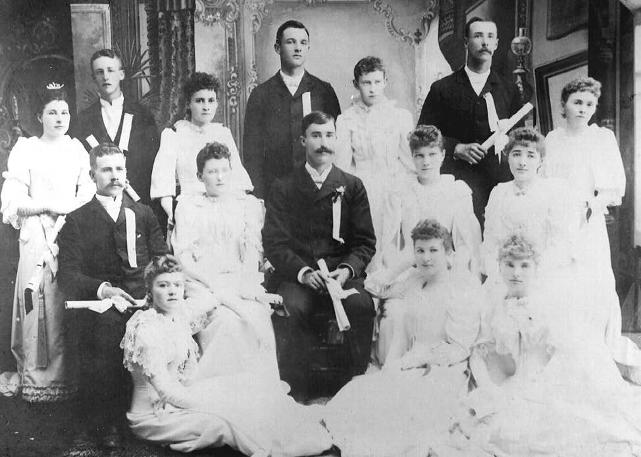 John Fulton was born December 16, 1868, in Lower Largo, near Edinburgh, Scotland, along the beautiful and rugged east coast bordering the Firth of Forth. His father was a captain of an early steamship, and several uncles commanded sailing ships. John attended Elie Academy, completing fourteen standards by the time he was sixteen. For a short time he worked in a cooperage, but soon he yielded to the call of the sea and served in the British Navy for a short time. He joined the crew of his uncle’s sailing vessel as an apprentice and made two round trips to Quebec. He then signed on with an iron bark (a type of ship) and made two trips to Sydney, Australia, where he joined an American ship that was dismasted in a storm on the China Sea. While waiting for repairs in Hong Kong, he worked on a Chinese river boat loading cargo, and learned to speak Chinese. At his captain’s and an American physician’s suggestions, John decided to become an American citizen and declared this intention at the American Consulate in Kowloon. He traveled to the United States as a crewman on the Coloma, commanded by Captain Neptune Love of Portland. En route, the captain recognized John’s interest in learning and tutored him in navigation and math and instilled in John a lasting love of literature. John earned a navigator’s license for the high seas, which he held for the rest of his life. Following his discharge in Portland, John headed south for California, but the train he boarded went only as far as Corvallis, where John recognized the opportunity to combine work and education at Oregon Agricultural College in 1888. He worked on the Horning farm and studied in the “sub-rook” course to fulfill registration requirements. John became a regular student and specialized in chemistry and mineralogy, and in 1892 received the first B.S. in Pure Science awarded by OAC.John is credited with an important role in shaping the early history of the college. He played on the first college football team in 1893 and helped organize the first glee club and dramatics club in the 1890s. He served as a chemistry instructor during his senior year. In his early years on the staff he was assistant professor of mineralogy and geology and was in charge of the college weather station. From this service he was inspired to name the student newspaper the Daily Barometer, which he helped organize.
John Fulton was born December 16, 1868, in Lower Largo, near Edinburgh, Scotland, along the beautiful and rugged east coast bordering the Firth of Forth. His father was a captain of an early steamship, and several uncles commanded sailing ships. John attended Elie Academy, completing fourteen standards by the time he was sixteen. For a short time he worked in a cooperage, but soon he yielded to the call of the sea and served in the British Navy for a short time. He joined the crew of his uncle’s sailing vessel as an apprentice and made two round trips to Quebec. He then signed on with an iron bark (a type of ship) and made two trips to Sydney, Australia, where he joined an American ship that was dismasted in a storm on the China Sea. While waiting for repairs in Hong Kong, he worked on a Chinese river boat loading cargo, and learned to speak Chinese. At his captain’s and an American physician’s suggestions, John decided to become an American citizen and declared this intention at the American Consulate in Kowloon. He traveled to the United States as a crewman on the Coloma, commanded by Captain Neptune Love of Portland. En route, the captain recognized John’s interest in learning and tutored him in navigation and math and instilled in John a lasting love of literature. John earned a navigator’s license for the high seas, which he held for the rest of his life. Following his discharge in Portland, John headed south for California, but the train he boarded went only as far as Corvallis, where John recognized the opportunity to combine work and education at Oregon Agricultural College in 1888. He worked on the Horning farm and studied in the “sub-rook” course to fulfill registration requirements. John became a regular student and specialized in chemistry and mineralogy, and in 1892 received the first B.S. in Pure Science awarded by OAC.John is credited with an important role in shaping the early history of the college. He played on the first college football team in 1893 and helped organize the first glee club and dramatics club in the 1890s. He served as a chemistry instructor during his senior year. In his early years on the staff he was assistant professor of mineralogy and geology and was in charge of the college weather station. From this service he was inspired to name the student newspaper the Daily Barometer, which he helped organize.
Martha Carolina Avery was born on November 1, 1863, on a stock ranch at Paisley, Oregon. She attended public schools in Paisley and Jacksonville, then moved to Corvallis onto land claimed and purchased by her parents, Punderson and Elizabeth Avery. She thus joined her grandparents, Joseph and Mary Avery, who were the original settlers of Corvallis. Much of the present OSU campus and city south of Monroe Street and west of Ninth Street now occupy the Avery donation land claim. Martha completed her secondary education at Mt. Angel Academy and entered Oregon Agricultural College to study literature in 1889. She graduated as valedictorian of her class; in 1892 Martha was awarded the first OAC Bachelor of Letters degree ever granted.
 John and Martha met while classmates at OAC and married in 1897. Soon after their marriage, the Fultons went east, where John did research for federal agencies in Washington, D.C. The couple had two children, both of whom followed in their father’s footsteps to become outstanding scientists. Their daughter, Helen Louise, was born in 1899, and their son, Robert A., was born in 1903. In 1903 John entered Harvard University as a special student, taking advanced work in chemistry and playing on Harvard’s football team. Helen earned a Ph.D. in bacteriology, and Robert earned a Ph.D. in chemistry.
John and Martha met while classmates at OAC and married in 1897. Soon after their marriage, the Fultons went east, where John did research for federal agencies in Washington, D.C. The couple had two children, both of whom followed in their father’s footsteps to become outstanding scientists. Their daughter, Helen Louise, was born in 1899, and their son, Robert A., was born in 1903. In 1903 John entered Harvard University as a special student, taking advanced work in chemistry and playing on Harvard’s football team. Helen earned a Ph.D. in bacteriology, and Robert earned a Ph.D. in chemistry.
John returned to OAC as an assistant professor of mineralogy and geology in 1903, assisting President Gatch in the revision of courses. John continued to travel and study advanced courses at George Washington University in Washington, D.C., while he was a staff member. He was made a full professor of mineralogy and geology and associate professor of chemistry in 1905. John took the examination for teaching high school science and earned his certificate. He enrolled at Willamette University to study advanced courses in the humanities to prepare to enter Harvard Medical School. However, he was persuaded to return to OAC to teach chemistry and work on his master’s degree from Harvard University, which he completed in 1910. In 1909 John was made a full professor of chemistry and head of the department, a position he held for thirty-three years until his retirement in 1940, when he took the rank of emeritus professor. He was well known by several generations of students for his teaching skills and ready Scottish wit through the forty-seven years he was associated with Oregon State.
Martha was a charter member of both the College Folk Club and the Corvallis Woman’s Club. She served as matron to St. Mary’s Chapter No. 9, Order of Eastern Star, and was active in the chapter for many years. She belonged to Chapter S of PEO and the Benton County Historical Society. Martha attended both the Presbyterian and Episcopal Churches. She was an accomplished pianist and enjoyed music throughout her life. In 1957 she was selected to reign as queen of the Corvallis Centennial.
John Fulton died February 1, 1953, at the age of eighty-five. He was indeed a self-made man — well-traveled, educated, and respected in the college and the community. Martha died October 8, 1962, at the age of eighty-nine; a first lady of Corvallis who lived her long, productive life serving both her family and the community founded by her pioneer ancestors.
